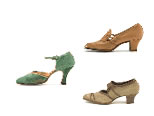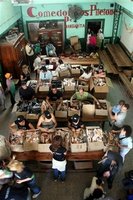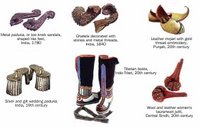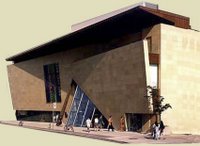The impact test machine
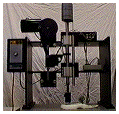 The impact test machine is a standard fixture in most sport research labs. The most fundamental use of the impact tester is to measure the cushioning characteristics of a material. Some of the measurements of interest to a sport researcher are listed below.
The impact test machine is a standard fixture in most sport research labs. The most fundamental use of the impact tester is to measure the cushioning characteristics of a material. Some of the measurements of interest to a sport researcher are listed below.Peak (g) - A measure of the average rate of deceleration of the impacting missile head into the material. Researchers look for a range between 9-14g for cushioning in the heel area of a midsole, while they look for less than 17g in the fore foot area. In general, the greater the number of g's the worse the cushioning characteristics of the material. Maximum Penetration (%) - This is a measure of how far the missile penetrates, or compresses the material. Researchers look for penetration no higher than 35%.Energy Return (%) - Energy return is a measure of how much of the kinetic energy from the system (the falling missile) is returned to the system. Researchers look for energy returns greater than 50%.
The impact tester (see figure 1) is a missile weighted with 8.5kg dropped from a 50mm height. The impact tester is designed to model an average runner (defined as 150lb, 5' 10", 7 minute per mile, male) and the forces he would generate in running.
Source Lab Tooles





